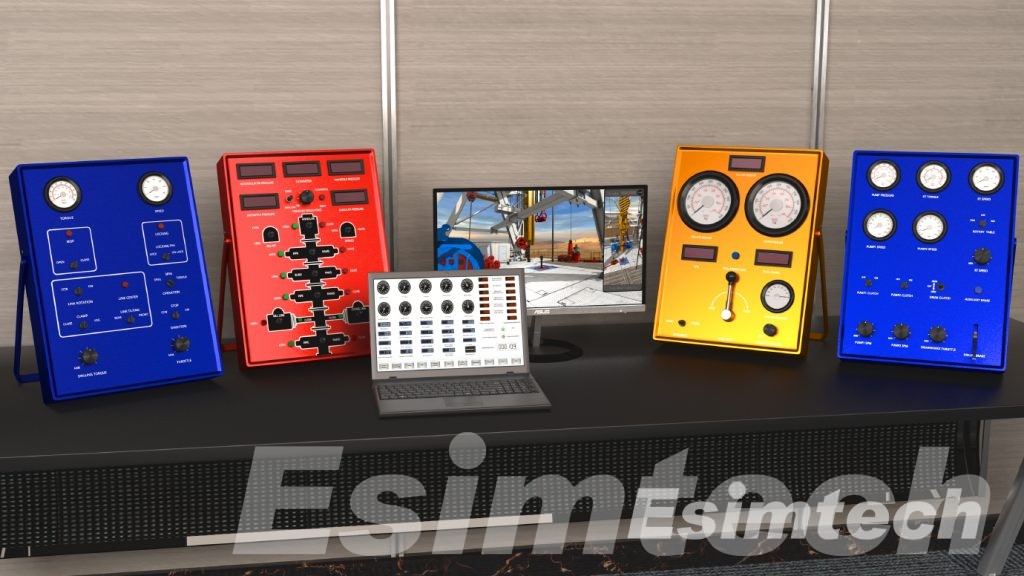Key Environmental Monitoring Technologies on Offshore Rigs
Offshore rigs has long been an important part of global energy production, enabling access to massive oil and gas reserves beneath the ocean floor. However, the exploitation of these resources raises environmental concerns, necessitating the use of robust monitoring tools to limit potential dangers and assure sustainable operations. In recent years, significant advancements in environmental monitoring technologies on offshore rigs have emerged, enhancing safety, minimizing environmental impact, and fostering responsible resource extraction.

What are Advancements in Environmental Monitoring Technologies on Offshore Rigs
1. Autonomous Underwater Vehicles (AUVs)
Autonomous Underwater Vehicles (AUVs) have proven to be invaluable tools for monitoring offshore environments. These autonomous underwater vehicles are outfitted with a variety of sensors that monitor aspects such as water quality, acoustic properties, and the presence of hydrocarbons. AUVs can navigate the underwater environment with precision, collecting data in areas that are challenging for human-operated equipment to access.
2. Sensor Networks
Sensor networks on offshore rigs enable continuous monitoring of environmental variables. These networks incorporate sensors that monitor characteristics like as air and water quality, noise levels, and vibration. Advanced sensor technologies can detect even minor changes in these parameters, providing early warning of potential problems such as leaks, spills, or equipment faults. The data generated from these sensor networks helps us better understand the rig’s influence on the environment.
2. Real-time Data Analytics
The incorporation of real-time data analytics into environmental monitoring systems has transformed how offshore rigs handle environmental concerns. Powerful algorithms analyze data from a variety of sensors, detecting trends and abnormalities that may suggest environmental issues. This allows for rapid decision-making and response, reducing the potential impact of incidents on marine ecosystems.
3. Environmental Impact Assessments (EIA)
Environmental impact assessments are critical for determining the potential implications of offshore drilling activities. Advanced technology, such as computer modeling and simulation tools, are increasingly used to forecast and assess the environmental impact of prospective drilling projects. These studies take into account elements such as water and air quality, marine biodiversity, and potential spill scenarios, allowing operators to make more informed decisions to reduce their environmental impact.

4. Remote Sensing and Satellite Imaging
By utilizing satellite imaging and remote sensing technologies, offshore rigs can monitor enormous ocean areas. These technologies provide real-time information on sea surface temperature, oil slicks, and changes in marine ecosystems.
Satellite monitoring enables early detection of environmental anomalies, allowing for rapid response to possible problems such as oil spills or changes in marine conditions.
5. Air Quality Monitoring Systems
Continuous monitoring of air quality on offshore rigs is crucial for assessing the impact of drilling activities on the atmosphere. Advanced sensor technologies measure parameters such as particulate matter, volatile organic compounds (VOCs), and greenhouse gas emissions.
Real-time air quality data helps operators implement measures to reduce emissions and maintain compliance with environmental regulations.

How Simulation Technology Used in Environmental Monitoring on Offshore Rigs
Simulation technology enables operators to model and predict various scenarios, assess potential risks, and optimize response strategies.

1. Oil Spill Simulations
Simulation techniques are used to model the probable consequences of oil spills under various environmental conditions. These simulations take into account variables including currents, wind patterns, and water temperatures.
Running oil spill simulations allows operators to examine the oil’s trajectory, estimate the affected areas, and optimize response techniques to efficiently contain and mitigate the spill.
2. Environmental Impact Assessments (EIA)
Before beginning drilling activities, simulation technology can help undertake full Environmental Impact Assessments (EIAs).
Modeling allows operators to forecast the potential consequences of drilling operations on water quality, marine habitats, and air quality. This assists in making informed decisions and putting in place the appropriate procedures to mitigate negative consequences.
3. Accident and Emergency Response Planning
Simulation tools are utilized to simulate emergency scenarios, such as equipment failures, leaks, or spills, to evaluate the effectiveness of emergency response plans.
By running emergency practice simulations, operators can identify weaknesses in their response strategies, refine protocols, and train personnel for efficient and timely responses to unforeseen environmental incidents.

4. Weather and Sea Conditions Modeling
Offshore drilling are exposed to challenging weather and sea conditions. Simulation technology allows operators to model these conditions and assess their potential impact on drilling operations and environmental monitoring systems.
By understanding how weather patterns may affect sensor readings, communication systems, and overall rig stability, operators can optimize monitoring strategies to ensure continuous and accurate data collection.

5. Operational Optimization
Day-to-day operations are optimized using simulation technology while keeping environmental factors in mind. For instance, it helps in determining the most efficient placement of monitoring sensors, predicting the dispersion of pollutants, and assessing the impact of drilling activities on marine life.
Optimization simulations contribute to minimizing the environmental footprint of offshore rigs by allowing operators to make informed decisions that align with sustainability goals.
6. Training and Preparedness
Simulation technology is utilized for training personnel in dealing with environmental emergencies. Realistic drilling simulations of various scenarios help operators and response teams to practice and refine their skills in a controlled environment.
This enhances the preparedness of the workforce, ensuring that they can effectively respond to environmental challenges and emergencies.

Conclusion
The implementation of cutting-edge environmental monitoring systems on offshore rigs is an important step toward sustainable and responsible resource production. As the need for energy grows, the oil and gas industry must adopt these technologies to protect our seas and marine ecosystems. Simulation technology is a key tool for monitoring environmental conditions on offshore rigs. Integration of simulation technology helps to reduce environmental risks and promote ethical resource extraction techniques. Continued research and innovation in this field will improve our ability to monitor, manage, and reduce the environmental impact of offshore drilling operations.

